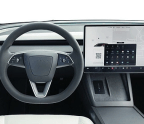HEAD VS. HEART
Words Scott Evans
Photographs Kevin Wing

Whether it’s basketball or boxing, everyone loves a hard-fought battle between two evenly matched rivals. Sure, a blowout is fun if your team wins, but the games that come down to the last second are the ones we talk about years later. This fight, between the redesigned 2017 Honda CR-V and the also all-new 2017 Mazda CX-5, is one of those fights.
About a year ago, we conducted a Big Test of the entire fleet of compact crossover SUVs, and the Mazda and Honda finished one-two—despite being at the tail end of their respective model cycles. That shows you how good they were: still the best even though the competition had four or five years to play catch-up. Now it’s Honda and Mazda’s time to set the benchmark yet again.
In terms of size and sales, Mazda has always been an underdog, but one that routinely punches well above its weight class. The CX-5, in particular, has been a perennial Motor Trend favorite in its class, though it’s never won an SUV of the Year award. The Honda CR-V, however, has. The SUV sales leader (and I mean among all SUVs, not just in the compact class), the CR-V is a dominant force in the industry, thanks to its combination of practicality, reliability, and versatility. The Mazda, though, is more fun.
Or is
You’re reading a preview, subscribe to read more.
Start your free 30 days





